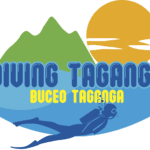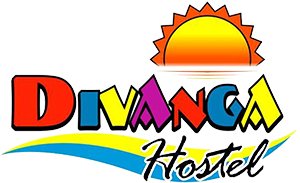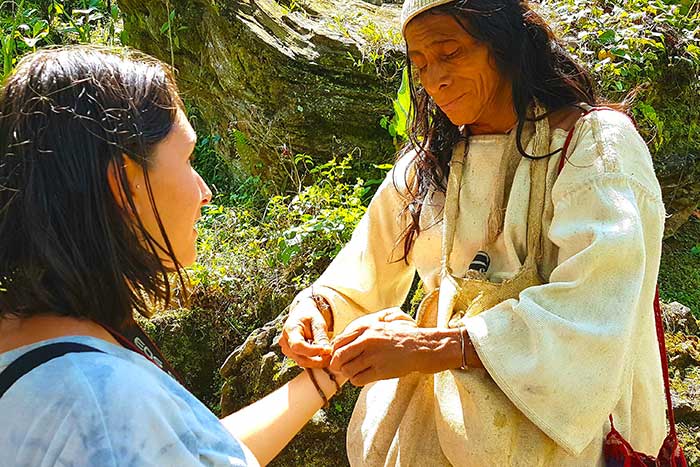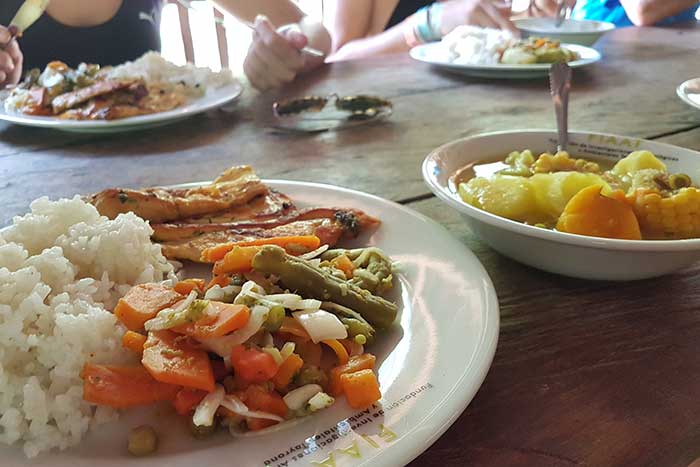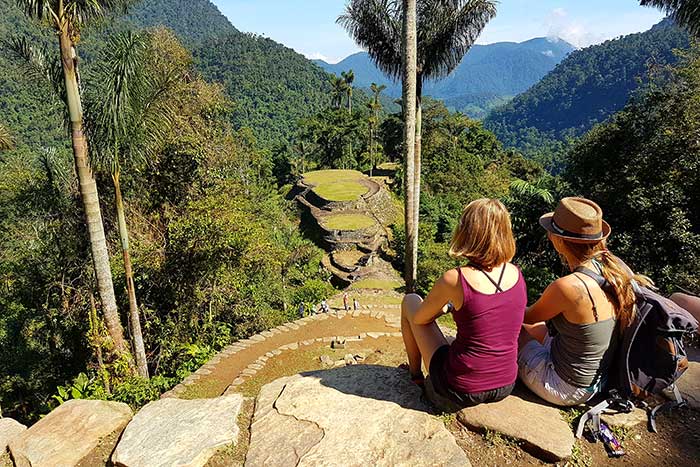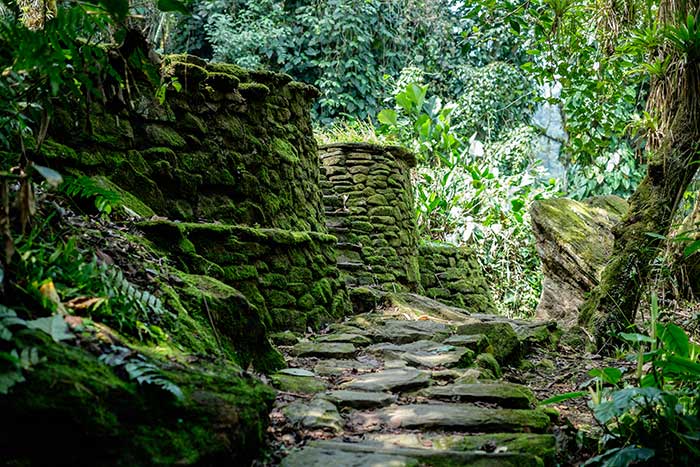What is Lost City?
Teyuna or Ciudad Perdida was an architectural complex used by the Taironas as an urban and ceremonial center in the Sierra Nevada de Santa Marta.
LOST CITY treck
When was it found?
In 1976 by a group of researchers of the Colombian Institute of Anthropology. This finding contributed greatly to the study of the way of life of the indigenous people of the region. However, it hasn’t been the only complex of this type found. In 1954, anthropologist Gerardo Reichel discovered a citadel in the Sierra Nevada, which was called “Pueblito”.
When was founded Lost City?
According to archaeological finds, the city may have been built around the twelfth or thirteenth century AD at 1,300 meters above sea level and consisted of 26 terraces. The largest of them had an area of 900 square meters and the architecture of the complex is integrated naturally to relief, without harming the flora.
What was in Lost City?
Lost City was a series of constructions of houses, connected by an intricate system of crossroads, stairs and retaining walls made of stone. The Indians built numerous platforms, on which they built ceremonial centers, housing, and food storage sites. All the citadel was built on the steep slopes of the Sierra Nevada.
Who are the indigenous people living there?
They are 4 Tairona indigenous ethnic groups that inhabit the Sierra Nevada de Santa Marta, retaining its own worldview and customs such as language (Dumuna), social, political, or pagamentos (traditional rituals) and their own governance.
Being part of the mountain, the four tribes in the Sierra Nevada share the responsibility for the conservation and balance between man and nature through consultations and ritual ceremonies. They are the Wiwas, on the side of Lost City, the Wintukua (Arhuaco) on the side of Valledupar, the Kaggaba (Kogi), on the side of Minca and Kaku’chukwa (Kankuamos)them side as Wiwas but further to Palomino. They all have in common that they consider the women as insignificant, so they never participate to any decision of the tribe.
How the indigenous participate to Lost City trek?
in 2010, an agreement was established with the Ministry of Tourism in Colombia that there were only five certificated agencies authorized to operate the Lost City trek. The agreement included a contribution given by each one of the agencies to the local indigenous community.
In exchange they maintain the camps and cabins, the path to Lost City, take care of the site itself. The indigenous people more involved are the Wiwas due to the proximity of their own camps.
Description of the tour
First day: From Taganga to El Mamey to Camp 1
The agency picks you up at Divanga hostel with a 4×4 vehicle until for a three hours ride until the village where the trek starts: El Mamey.
You get lunch in this hamlet and afterward, is a walk for four hours to the first camp.
You have dinner at camp 1 and spend the night in hammocks or beds with mosquito nets.
Second day: From Camp 1 to Mutanzi to Camp 3
After breakfast, you leave early in the morning from camp 1 for a two-hour hike until arrive at the Mutanzi indigenous village.
From there, you walk 40 minutes to camp 2, where you can enjoy a delicious lunch.
Then you hike for four hours until arriving at the camp of Mamo Romualdo Camp 3.
you can swim in crystal clear waters and appreciate the variety of flora, fauna and bird sounds.
You have dinner at camp 3 and spend the night in hammocks or beds with mosquito nets.
Third day: From Camp 3 to Lost City to Camp 2
After breakfast, you start climbing early in the morning to the Lost City site.
There you can spend two hours exploring, observing the vestiges and learn about the archaeological, ethnological and historical sacred place, breathing the pure atmosphere of the mountains.
After this wonderful moment, you return to Camp 3 and enjoy your lunch.
In the early afternoon, you walk four hours hiking until arriving at Camp 2.
You have dinner at camp 2 and spend the night in hammocks or beds with mosquito nets.
Fourth day: From Camp 2 to El Mamey to Divanga Hostel
After a delicious breakfast, you start early from Camp 2 walking for 7 hours until the first hamlet when you begin the trek: El Mamey.
You get your lunch and be ready until the 4 × 4 whiles car brings you back on a 3 hours ride to Divanga Hostel.
Items needed and recommendations
This is what you have to bring in your small backpack. A single bottle of water that the guides will fill up when needed. We insist on the repellent because at certain times there are many mosquitoes. You will cross a river 5 times, that’s why you need to keep your clothes in plastic bags.
- Trekking Boots
- Two pair of shorts
- Sandals
- Insect Repellent
- Sunscreen
- Trousers
- A Sweater
- Flash Light
- Three t-shirts
- Swimsuit
- Personal Toiletries
- A Towel
- Backpack
- Toilet Paper
- Plastic Bags
- 1.5 Ltr of Water (only first day)
- four Pair of Socks
- if take medicines don’t forget to bring them
- Identification document
The Lost City trek includes:
- Guides, cook and area scouts
- Round trip transportation to El Mamey
- Entrance fee to the Sierra Nevada National Park
- Accommodation in hammocks or beds with mosquito nets
- Contribution to indigenous community
- Contribution to peasant communities
- Carriers and mules for luggage
- Breakfast, lunch, dinner and local fruits
- Travel insurance
- Medical assistance
The price of the trek is 1.750.000 pesos per person. Including 3 nights and 4 days.
The trek can be done also in 4 nights and 5 days, ask for the price.
If you are a vegetarian, you have to let us know this, we will prepare special vegetarian food.
The mules rental service is optional and it has an additional cost of 200,000 pesos per day hired.
Book now to Lost City with the Divanga Hostel:
We believe in the values of sustainable tourism by promoting Lost City trek
To be sustainable or no to be!
To book a trek or package contact us.
Diving Taganga – Buceo Taganga
In Divanga Hostel:
Calle 11 # Cra 4 esquina Taganga
Santa Marta Colombia
Cel whatsapp: +57 3166515203
divangacolombia@gmail.com
